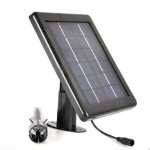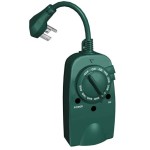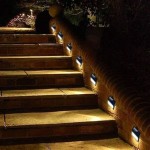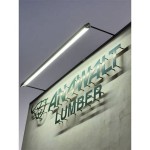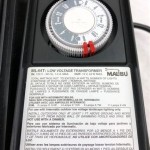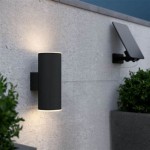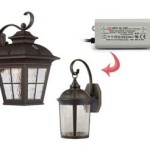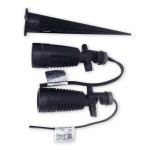What Is The Best Outdoor Ceiling Fan?
Selecting the best outdoor ceiling fan involves careful consideration of several factors, including the fan's construction materials, size, features, and energy efficiency. The suitability of a given fan is also heavily dependent on the specific outdoor environment in which it will be used. This article aims to explore these considerations in detail, enabling informed decision-making when choosing an outdoor ceiling fan that meets specific needs and preferences.
Outdoor ceiling fans offer a multitude of benefits, including improved air circulation, insect deterrence, and aesthetic enhancement of outdoor spaces. Unlike indoor fans, outdoor models are designed to withstand the elements, featuring moisture-resistant components and durable housings. The best outdoor ceiling fan effectively balances performance, durability, and style to create a comfortable and visually appealing outdoor living area.
Understanding Outdoor Fan Ratings
A critical factor in selecting the best outdoor ceiling fan is understanding the various ratings that indicate its suitability for outdoor use. Two primary ratings are particularly important: UL Wet Rated and UL Damp Rated. These ratings determine the environment in which the fan is designed to operate safely and effectively.
UL Wet Rated: Fans with a UL Wet Rating are constructed to withstand direct exposure to rain, snow, and other forms of precipitation. These fans are ideal for uncovered patios, decks, gazebos, or any outdoor area that is not sheltered. Internal components are completely sealed to prevent water damage and corrosion. Materials are selected for their ability to resist rust and degradation under harsh weather conditions.
UL Damp Rated: Damp Rated fans are suitable for covered outdoor areas where they are shielded from direct rain but may be exposed to humidity and moisture. These are commonly used under covered porches, patios with a roof, or in sunrooms. Although not designed for direct water exposure, they are built to withstand higher levels of humidity than indoor fans. The components are treated to resist corrosion but are less robust than those found in wet-rated fans.
Selecting the appropriate rating is crucial for ensuring the longevity and safe operation of the fan. Using a damp-rated fan in a wet environment can lead to premature failure, electrical hazards, and voided warranties. Therefore, accurately assessing the level of weather exposure is a critical first step in the selection process.
Key Features to Consider
Beyond the weather rating, several features contribute to the overall performance and suitability of an outdoor ceiling fan. These features impact factors such as airflow, noise level, energy consumption, and ease of use. Evaluating these aspects will help identify the best fan for a particular applications.
Blade Material and Design: Outdoor fan blades are typically constructed from materials like ABS plastic, acrylic, or aluminum, which are resistant to warping, cracking, and corrosion. The blade design also plays a crucial role in airflow efficiency. Wider blades generally move more air, while blades with a steeper pitch can create a stronger downdraft. Blade span, the diameter of the circle the blades make, directly impacts the area the fan can effectively cool.
Motor Type and Performance: The fan motor is the heart of the unit, and its quality directly affects performance and lifespan. DC (Direct Current) motors are generally more energy-efficient and quieter than AC (Alternating Current) motors. They also often offer more speed settings, allowing for finer control over airflow. Look for motors with sealed bearings to prevent dust and moisture ingress, which can extend the lifespan of the motor.
Lighting Options: Many outdoor ceiling fans include integrated lighting fixtures. LED lights are the preferred choice due to their energy efficiency, long lifespan, and ability to produce bright, adjustable light. When selecting a fan with a light, consider the brightness (measured in lumens) and color temperature (measured in Kelvin) to ensure it provides the desired ambiance for the outdoor space. Also, assess whether the light is dimmable, which can further enhance the atmosphere.
Control Options: Outdoor ceiling fans can be controlled via pull chains, wall-mounted controls, or remote controls. Remote controls offer the most convenience, allowing for easy adjustment of fan speed and light settings from anywhere in the outdoor area. Smart fans can be integrated with home automation systems, enabling control via smartphone apps or voice commands. This level of control allows for customized settings based on time of day, weather conditions, or personal preferences.
Warranty and Brand Reputation: The warranty offered by the manufacturer provides an indication of their confidence in the product's durability and reliability. Look for fans with extended warranties on the motor, as this is typically the most expensive component to replace. Researching the brand's reputation can also provide valuable insights into the product's quality and customer support.
Selecting the Right Size and Style
Choosing the appropriate size and style of outdoor ceiling fan is crucial for both aesthetic appeal and functional performance. A fan that is too small will not provide adequate airflow, while one that is too large may overwhelm the space. The style should complement the existing architecture and decor of the outdoor area.
Sizing Considerations: The size of the fan is typically determined by the square footage of the area it is intended to cool. Here's a general guideline:
* Areas up to 75 square feet: 36-inch blade span * Areas from 76 to 144 square feet: 42-inch blade span * Areas from 145 to 225 square feet: 52-inch blade span * Areas larger than 225 square feet: 60-inch or larger blade span, or multiple fans
These are just general recommendations. Ceiling height also plays a role. For ceilings lower than 8 feet, a flush-mount fan (also known as a hugger fan) is recommended to ensure adequate headroom. For higher ceilings, a downrod can be used to position the fan at the optimal height for airflow, typically 8 to 9 feet above the floor.
Style Considerations: Outdoor ceiling fans are available in a wide range of styles, from traditional to contemporary. Choose a style that complements the existing architecture and décor of the outdoor space. Consider the color and finish of the fan, as well as the design of the blades and housing. Some popular styles include:
* Coastal: Often features natural materials like rattan or bamboo, with light colors and nautical accents. * Rustic: Emphasizes natural wood tones and distressed finishes, with designs that evoke a sense of warmth and history. * Modern: Sleek and minimalist designs with clean lines and metallic finishes. * Traditional: Classic designs with intricate details and elegant curves.
The best outdoor ceiling fan seamlessly integrates with the overall aesthetic of the outdoor space, enhancing its visual appeal while providing effective airflow and comfort.
The process of selecting the best outdoor ceiling fan requires careful evaluation of several crucial factors. Understanding the nuances of UL ratings and selecting an appropriately rated fan for the environment is paramount. Key features like blade material, motor type, lighting, and control options contribute to the fan's overall performance and suitability. Size and style considerations ensure that the fan not only functions effectively but also complements the aesthetics of the outdoor space.
By carefully considering these aspects, it is possible to identify an outdoor ceiling fan that provides optimal comfort, durability, and style, enhancing the enjoyment of outdoor living areas for years to come.
Ultimately the best outdoor ceiling fan will depend on individual needs and the specific characteristics of the outdoor space. Taking the time to conduct thorough research and consider all relevant factors will ensure a satisfying and long-lasting investment.

Best Outdoor Ceiling Fans Lightology

Best Outdoor Ceiling Fans Lightology

Best Outdoor Ceiling Fans Lightology

Best Outdoor Ceiling Fans For Patios Decks Com

Best Outdoor Ceiling Fans Lightology

Outdoor Whirled Best Ceiling Fans For Patios Decks Porches Delmarfans Com

Rainsford Outdoor 52 Inch Ceiling Fan Hunter

The 11 Best Outdoor Ceiling Fans 2024 For Outdoors
10 Outdoor Ceiling Fans That Aren T Total Eyesores

12 Best Outdoor Ceiling Fans For Every Home Decor Modern Fan
Related Posts
